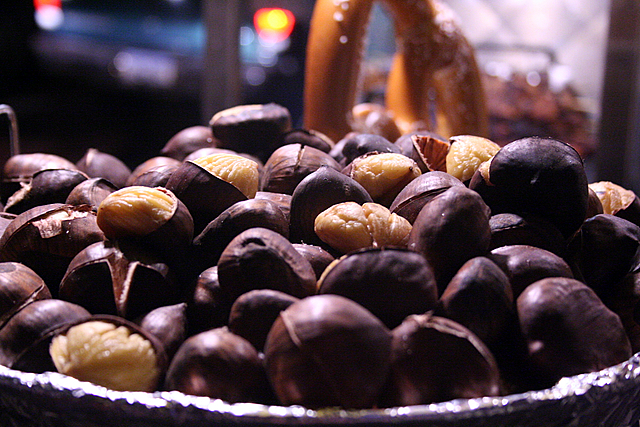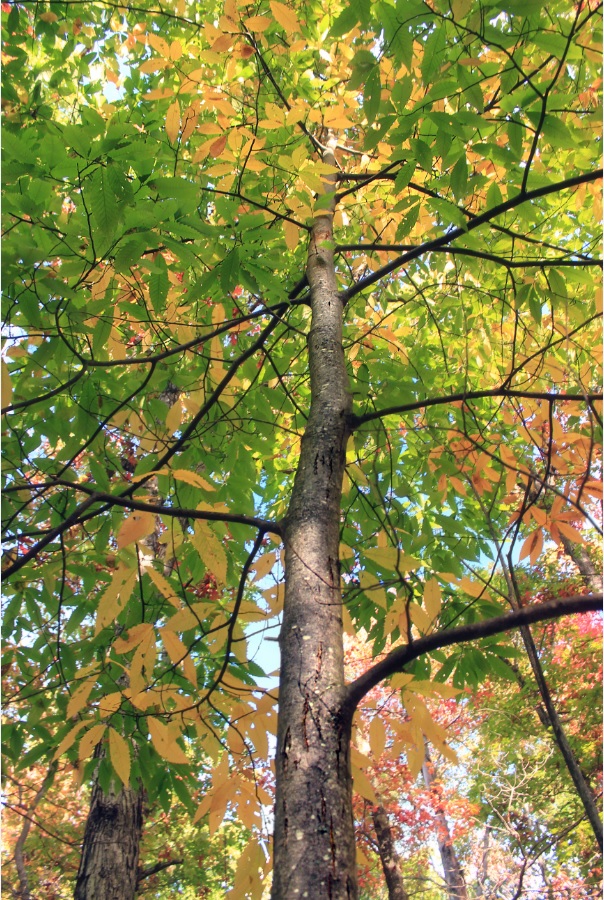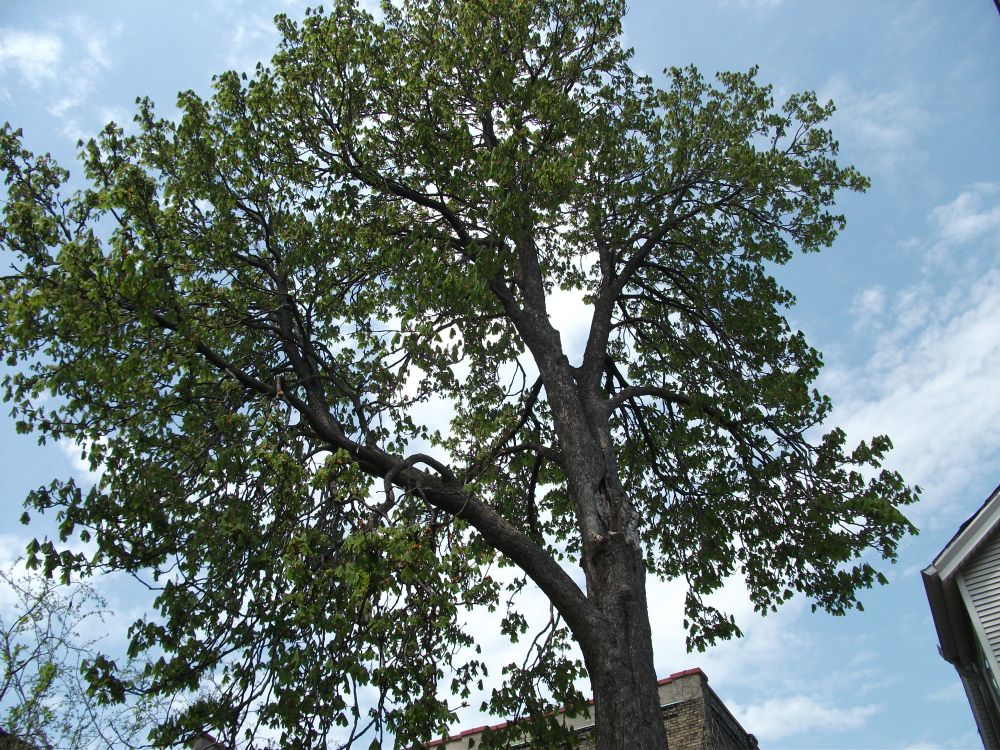“So where the heck is this mystic edible chestnut tree!?” I wondered.

American chestnuts, shown here roasted, were the edible chestnuts I was hoping for. It turns out that 100 years ago it would not have been hard for us to find one in southwestern Ontario. The American chestnut (Castanea dentata) was one of the most common trees in the area. Reaching over 30 metres tall and living up to 500 years, the chestnut was known as “the queen of eastern American forest trees.” So what happened to what was once also called the “redwood of the East?”

Before Emerald Ash Borer and before Dutch Elm Disease, an extremely lethal tree pathogen found its way to North America: chestnut blight. This fungus was unintentionally introduced from Asia around 1904, and was first detected killing chestnut trees in the Bronx Zoo in New York City. It reached southern Ontario in the 1920s, and by the 1950s, the American chestnut population was considered “effectively extinct”.

But the American chestnut is not actually extinct. In fact, there are millions of sprouts that can be found throughout its native range. The blight kills the above-ground portion of the trees, but the root system can survive and form new sprouts. Luckily, although the sprouts usually only reach about 15 feet tall before being killed by the blight, some are able to produce nuts before they die, enabling a new generation of trees to grow.
In addition, a (very) few mature American chestnuts still exist, apparently resistant to the blight. Researchers at the University of Guelph have been collecting seed from these rare “mother” trees. The university has created a National Recovery Plan with the goal of producing a blight-resistant chestnut tree by hybridizing the American chestnut with other species of chestnuts. Some say this recovery could take 18-20 years, while others say it is a more long-term project (which will take 75-100 years before we know whether the tree can be re-established as a mainstay of eastern forests).

Another recovery strategy that researchers are exploring is injecting chestnut trees with a virus to suppress the blight. This approach has saved the native chestnut tree in Europe and allowed some “mother” trees in Canada to survive.

It can seem disheartening seeing wave after wave of exotic pests and pathogens killing our native trees, but they also provide opportunities to learn. The recovery plan for the American chestnut could provide a guiding vision for other disease-threatened tree species, such as butternuts and American elms. These threats also provide an opportunity to increase public awareness about our urban forest and the help it needs. All these challenges to our urban forest can help us value our trees even more.

Black walnut tree
Due to their susceptibility to blight, LEAF does not currently plant chestnut trees. Perhaps one day we will, if a resistant variety is developed. In the meantime, we offer black walnut trees and American hazelnut shrubs through our Backyard Tree Planting Program, if you’d like to grow nuts in your own backyard!
The Backyard Tree Planting Program is supported by Ontario Power Generation, York Region, Ontario Trillium Foundation, City of Markham, Town of Ajax, Durham Region, Toronto and Region Conservation, and Toronto Hydro.
Michael Marcucci is an Arborist with LEAF.
